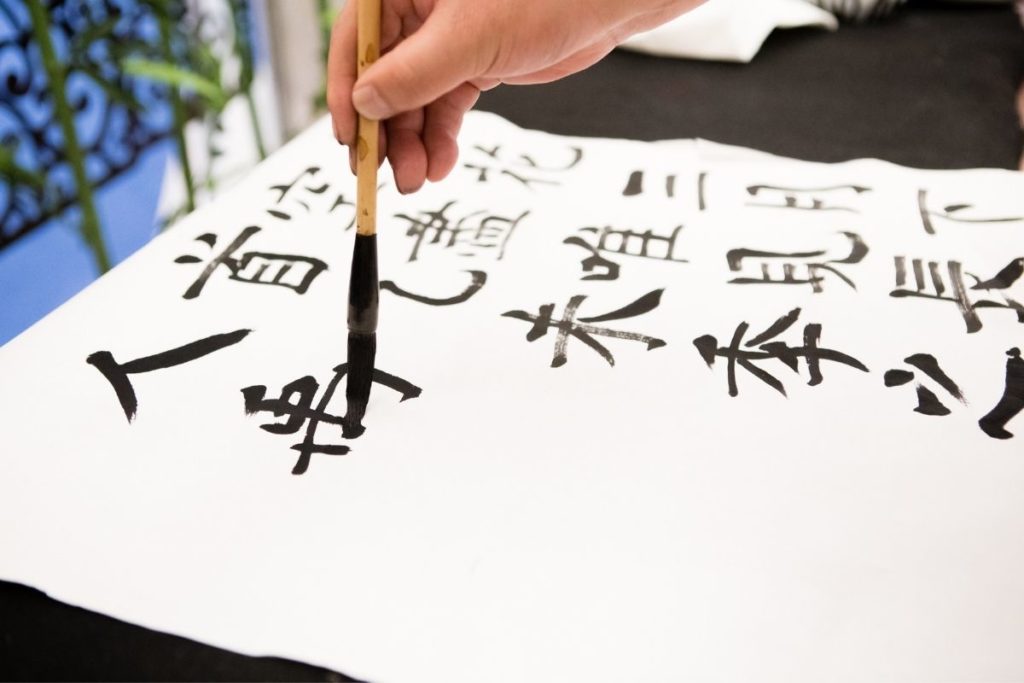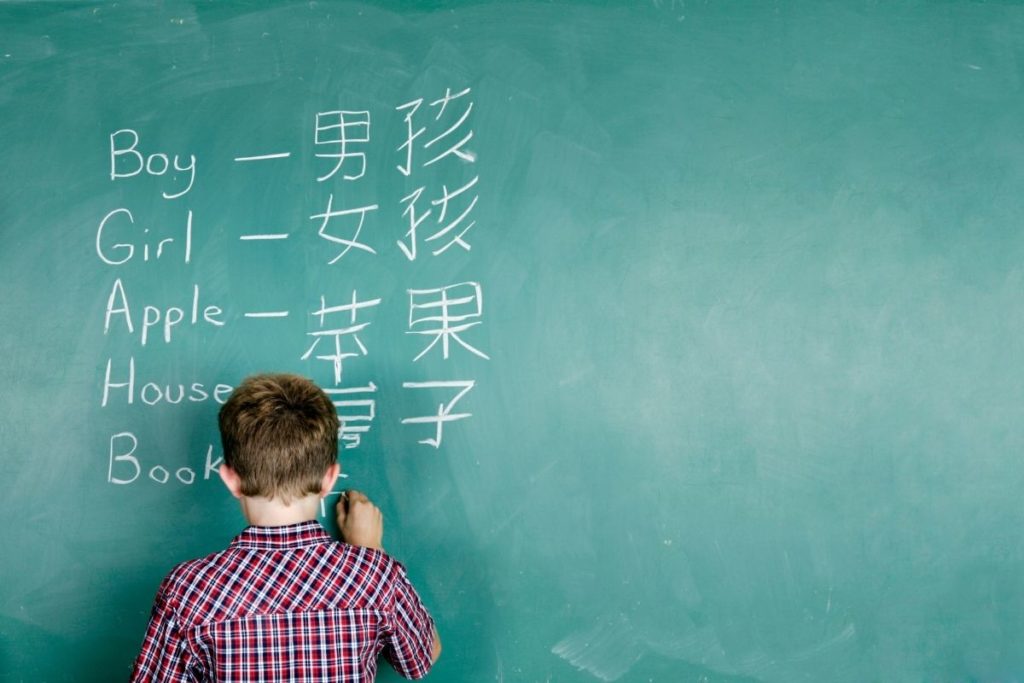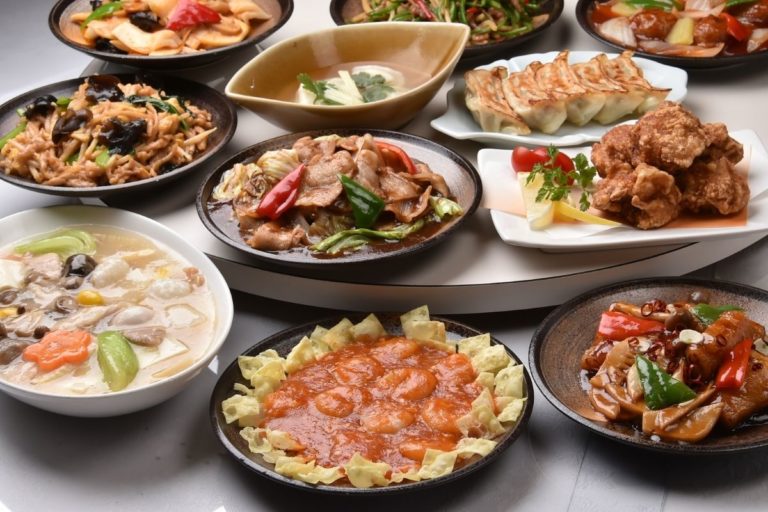
9 best books to learn Chinese language. Grammar, conversation, & characters calligraphy. Learn to speak Mandarin Chinese with these textbooks for beginners and advanced students
We’re all well aware of Chinese being the most widely spoken language in the World (at least mother tongue speakers count).
However, despite China being also the Planet’s second biggest economy, knowledge of this language is very limited outside its borders.
Many people are already doing their best to get this gap filled, but if you are approaching Chinese language for the first time, this list of books may come in handy.
Chinese is considered one of the hardest languages to master, especially if your mother tongue an Indo-European one (like English).
Its pronunciation, vocabulary and grammar are very different from what you are accustomed to, and we didn’t even mention the thousands’ characters Chinese language is written with.
So the following list of books includes grammar or conversation-oriented ones and special attention is given to Chinese writing. You will also find two children’s books for the little ones.
Disclosure: Some of our articles contain affiliate links (as an Amazon affiliate I earn from qualifying purchases).
Grammar and Conversation

New Practical Chinese Reader
by Liu Xun
Prices pulled from the Amazon Product Advertising API on:
Product prices and availability are accurate as of the date/time indicated and are subject to change. Any price and availability information displayed on [relevant Amazon Site(s), as applicable] at the time of purchase will apply to the purchase of this product.
The gold standard of Chinese teaching for English speakers, New Practical Chinese Reader was the no-brainer choice for many generations of learners approaching Chinese language for the first time.
First printed in 1981, this book also provides much-needed cultural knowledge to learn more about China. Given its unbelievable price, you may want to buy all six volumes at once, but remember, learning Chinese requires a long, long time.
Mandarin Chinese for Beginners: Learning Conversational Chinese
by Yi Ren
Prices pulled from the Amazon Product Advertising API on:
Product prices and availability are accurate as of the date/time indicated and are subject to change. Any price and availability information displayed on [relevant Amazon Site(s), as applicable] at the time of purchase will apply to the purchase of this product.
This book focuses on spoken Chinese and being fully romanized, you can approach it even if you want to ignore characters. It includes mp3 audio covering all 16 chapters of the book and all the lessons cover real life dialogues and situations.
This down-to-earth approach will unlock your listening skills and you will be surprised when, after some practice, you will get the meaning of some words in Chinese Language conversations and be understood.
Niubi!: The Real Chinese You Were Never Taught in School
by Eveline Chao
Prices pulled from the Amazon Product Advertising API on:
Product prices and availability are accurate as of the date/time indicated and are subject to change. Any price and availability information displayed on [relevant Amazon Site(s), as applicable] at the time of purchase will apply to the purchase of this product.
Time for something different: this book will teach you the Chinese language you will never learn at school, introducing the magical world of Chinese swear words. Curse words (even mild ones) are not warmly welcomed in Chinese culture and this makes the information in this book especially precious.
It is very versatile: beginner or intermediate Chinese students can enrich their dirty words vocabulary, while international cursing enthusiasts will enjoy the subtlety of explanations by the author.
Chinese Writing and Calligraphy

The First 100 Chinese Characters: Simplified Character Edition: (HSK Level 1) The Quick and Easy Way to Learn the Basic Chinese Characters
by Laurence Matthews
Prices pulled from the Amazon Product Advertising API on:
Product prices and availability are accurate as of the date/time indicated and are subject to change. Any price and availability information displayed on [relevant Amazon Site(s), as applicable] at the time of purchase will apply to the purchase of this product.
You may think 100 characters is a lot. In fact, an average Chinese adult knows at least 40 times this number, so don’t be afraid: a journey of a thousand miles begins with a single step!
Each character is followed by some word examples, pinyin pronunciation, radical/stroke count and stroke order. The book also includes special boxes with grid lines for you to practice Chinese writing.
Teach Yourself Beginner’s Chinese Script
by Elizabeth Scurfield
Prices pulled from the Amazon Product Advertising API on:
Product prices and availability are accurate as of the date/time indicated and are subject to change. Any price and availability information displayed on [relevant Amazon Site(s), as applicable] at the time of purchase will apply to the purchase of this product.
This book gives an insight on Chinese writing, with wonderful examples from everyday life, from street signs to restaurant menus and warnings.
Through this precious book, you will feel like you won’t feel lost in a street lined with Chinese Characters signs: a real confidence booster. Every chapter has a list of question to answer, so it can be used as teaching material too.
Chineasy: The New Way to Read Chinese
by ShaoLan Hsueh
Prices pulled from the Amazon Product Advertising API on:
Product prices and availability are accurate as of the date/time indicated and are subject to change. Any price and availability information displayed on [relevant Amazon Site(s), as applicable] at the time of purchase will apply to the purchase of this product.
Despite the title, this book is not really a New Method to learn Chinese, but rather a method to think of Chinese characters in a different way, starting from their graphic history and their implications.
Through vivid illustrations, you will get an idea of the way single characters can be joined to form combinations.
It can be enjoyed by people who are approaching Chinese language for the first time as well as those who already have a good level of the language.
My First Book of Chinese Calligraphy
by Guillaume Olive
Prices pulled from the Amazon Product Advertising API on:
Product prices and availability are accurate as of the date/time indicated and are subject to change. Any price and availability information displayed on [relevant Amazon Site(s), as applicable] at the time of purchase will apply to the purchase of this product.
Very rich book for young and mature adults explaining the secrets of Chinese Calligraphy.
Aside from character writing, the author made quite an effort in introducing traditional materials and techniques that have been used for centuries.
It has an artsy touch and will give you an idea on how to convey meaning through calligraphy.
It can be used as an art tutorial book, but previous knowledge of Chinese Language gives it a different depth.
Kid’s Corner

BoBo Loves Dumplings (A Bilingual Dual Language Counting Book for Children, Kids, and Babies Written in Chinese, English, and PinYin)
by Melissa Miao
Prices pulled from the Amazon Product Advertising API on:
Product prices and availability are accurate as of the date/time indicated and are subject to change. Any price and availability information displayed on [relevant Amazon Site(s), as applicable] at the time of purchase will apply to the purchase of this product.
Follow the culinary adventures of Bobo the red panda! Kids will learn to count from 1 to 10 in Chinese and English through enticing pictures of the famous Chinese Dishes Bobo loves to eat.
Its good quality paperboard pages are ideal for smaller hands and the glossy pages are easy to clean.
It has pinyin too and many consider it a game-changer for children who just don’t click with Mandarin.
I Like Pickles: (Bilingual English and Mandarin Chinese books for kids) Dual language Edition
by Ms Jane Thai
Prices pulled from the Amazon Product Advertising API on:
Product prices and availability are accurate as of the date/time indicated and are subject to change. Any price and availability information displayed on [relevant Amazon Site(s), as applicable] at the time of purchase will apply to the purchase of this product.
Bobby really loves to eat pickles. In this book, children will learn some everyday phrases in Chinese with the proven method of sentence repetition with simple language.
Perfect for children approaching Chinese language for the first time.
It is written in simplified Chinese, pinyin and English and is suitable for children as young as 2 years old. Children find this silly book funny and cute.
More about Chinese Culture?
- Awakening through Enlightenment: 11 Books on Zen Buddhism
- Best Chinese Books and Novels
- Books About Kung Fu – How to Learn the Most Ancient Martial Art













